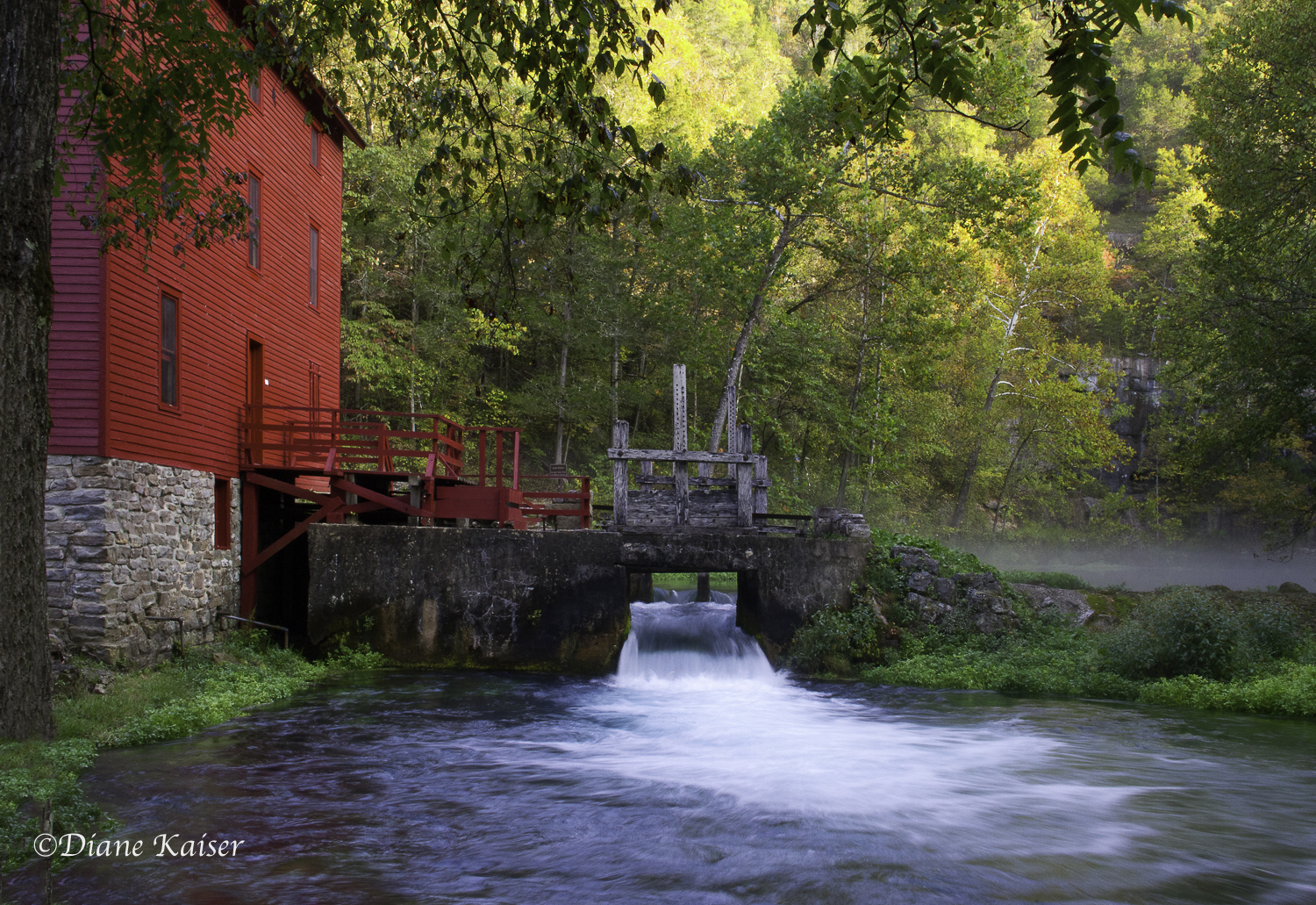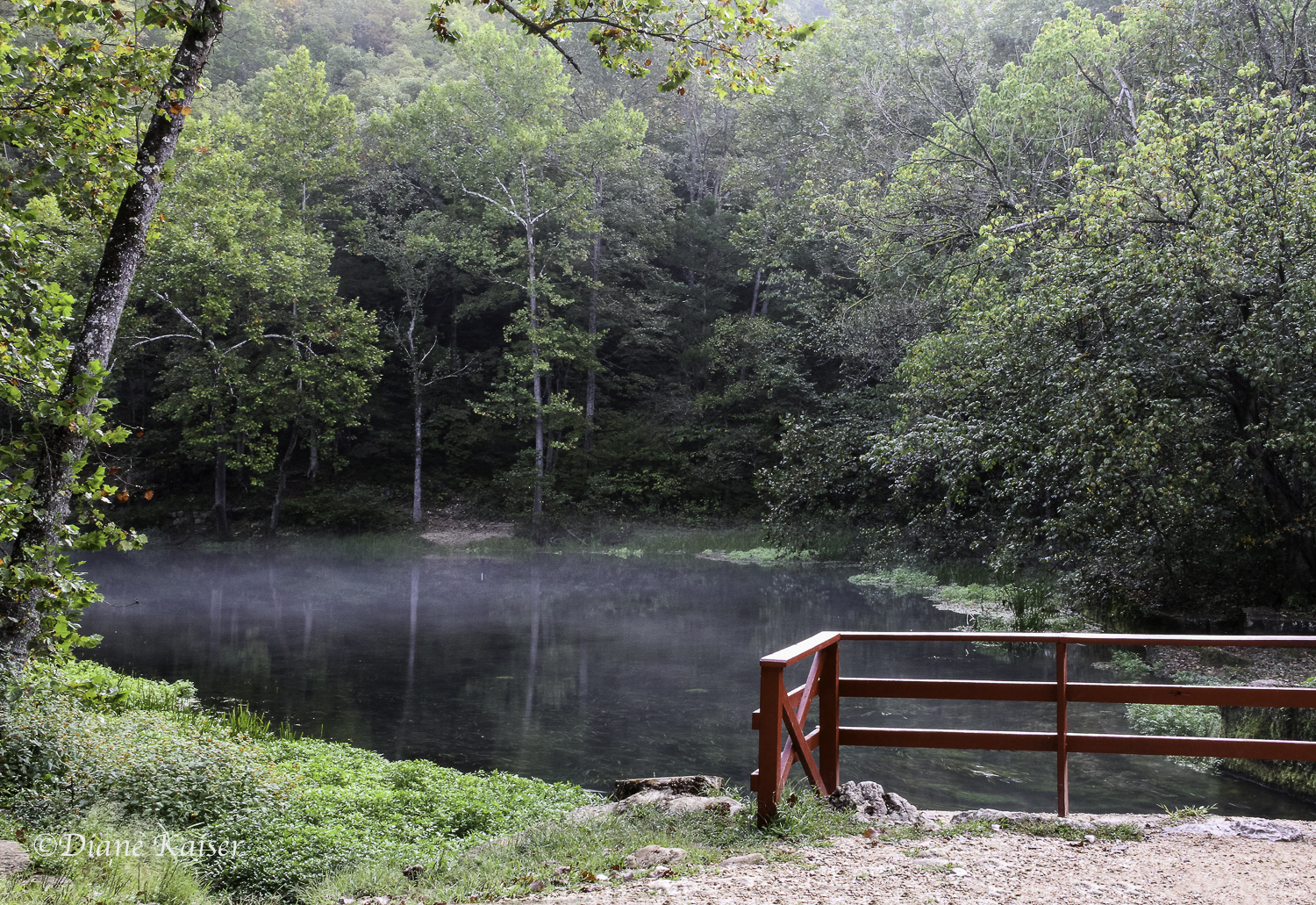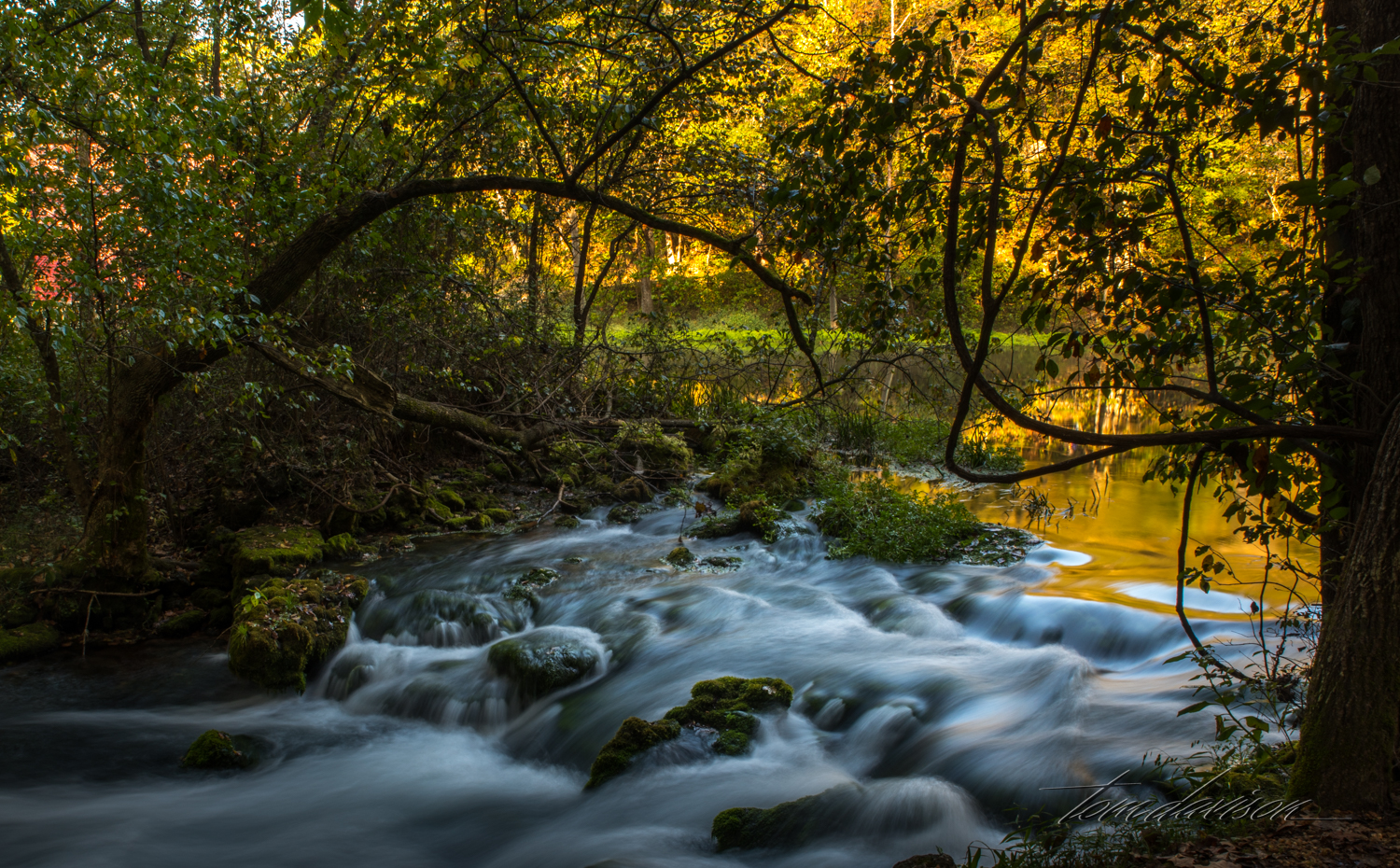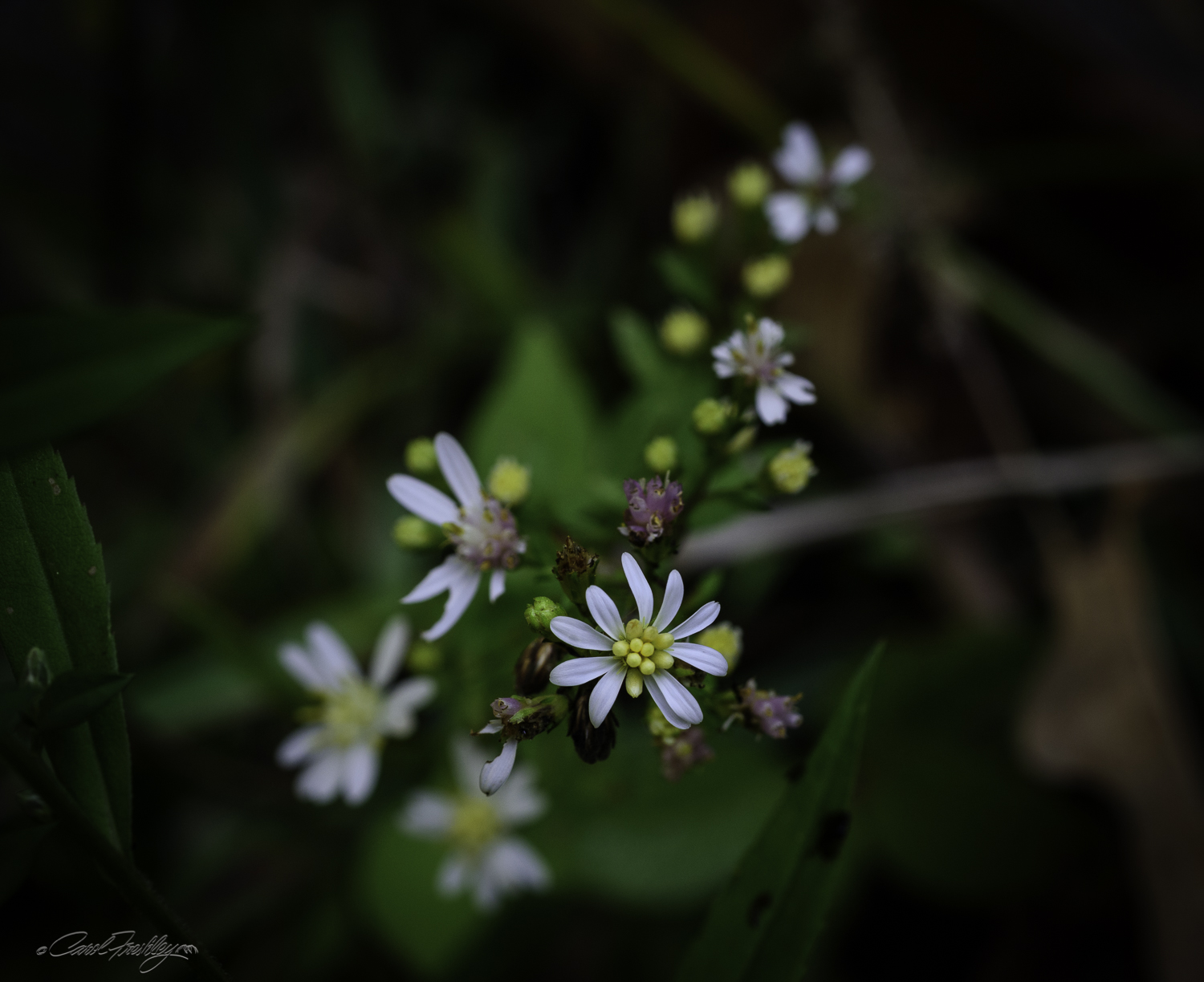This site is on the bucket list of many photographers. Certainly the site is photogenic. But, I suspect that there is more than that going for it. We like history! The site reminds us of a different time where such spring fed milling operations were vital to community life. Grain was ground to make bread, whether from wheat or corn. People gathered at mills, exchanged news and were able to socialize. It was not uncommon for additional shops to open meeting other needs of people who traveled in miles for milling services. Dances, games and picnics were all part of the Alley's busier days. A school was developed on this site (sorry no photographs of it). Church services were held in the school.
We arrived very early in the morning just as the sun was beginning to peek over the hills surrounding the spring.
As the sun rose, it was easier to appreciate the richness of the scene. Are you thinking, "Where is the waterwheel?" This mill did not have one! Instead, it was built in 1894 with what was considered modern machinery at the time. Steel rollers were used for grinding and the exterior water wheel was replaced by a submerged turbine. The speed of the turbine was controlled by managing the amount of water that went through the 'gate'.
The mill was originally painted white with green trim. It was later that it was painted the red color that it is so famous for today.
A clear view of the gate used to control the water's flow.
Have a good chuckle on this image and the one above. You can hear the dialogue, "Here, take this spot. I am done with it and it is perfect." Yes, it was. Diane got a better representation of the fog that still covered the spring. I got six extra windows! It is just so much more fun being out with friends who share special spots with us.
Clear, cold water rise from deep within Alley Spring at an average daily flow of 81 million gallons. The spring's basin is funneled shaped with a depth of 32 feet. If there were more water restricted, the overflow would go down a creek to the right of this dam. We explored that side as well.
The fog lasted for some time after we arrived.
There are slick rock walls at the back of the spring. They seep water and support what appear to be hanging gardens of columbine and lush ferns. If you look carefully, you can see a trail that surrounds the spring.
This is the view if you are looking across the spring while standing beneath the rock wall shown earlier.
This is the stream fed by the overflow of water that does not go through the gate. The streamoffered unlimited opportunities to get creative with one's camera!
And then the sunshine was just perfect for gold!!!!
While Tom and Diane mined gold I set out back along the trail looking for the flowers that earlier had been in light not conducive to photographing flowers.
Tom ventured even further down the path along the creek, finding even more interesting scenes.
Gold had turned to red!
Alley Spring was larger than most grist mills in the area. It was a progressive business venture for its time and the complex machinery installed could only be provided by specialized factories such as Richmond City Mill Works. Unfortunately, the mill was designed to process wheat flour in an area where corn was the predominant crop (strategic error).
The turbine seemed small to me! The mill is not operational as Dillard's Mill is (another blog). There are exhibits inside the mill where one can see the equipment and personnel are on site to explain the process and answer questions.
Add this site to your bucket list. Tom and I are finding that Arkansas and Missouri have lots of treasures to photograph.

























